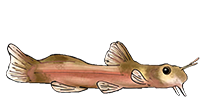Why keep a group
- French47
- Posts: 57
- Joined: 04 Nov 2011, 19:40
- My cats species list: 10 (i:1, k:0)
- My aquaria list: 1 (i:1)
- Location 1: Burgess Hill, Sussex
- Location 2: sussex
- Interests: Tropical fish, Natural History, Military History and Book collecting
Why keep a group
Hi to all,
Can someone please explain why when you read up on some catfish i.e Otocinlus does it say best to keep at least 6.
This is my first time with Oto's and I do have 6, BUT I have never seen them group up or swim together they just do their own thing in different parts of the tank. As they don't talk to each other why should they get lonely. there are other fish in the tank but of a completely different breed.
So as I said at the start why keep more than one.
Cheers French47
Can someone please explain why when you read up on some catfish i.e Otocinlus does it say best to keep at least 6.
This is my first time with Oto's and I do have 6, BUT I have never seen them group up or swim together they just do their own thing in different parts of the tank. As they don't talk to each other why should they get lonely. there are other fish in the tank but of a completely different breed.
So as I said at the start why keep more than one.
Cheers French47
- MatsP
- Posts: 21038
- Joined: 06 Oct 2004, 13:58
- My articles: 4
- My images: 28
- My cats species list: 117 (i:33, k:0)
- My aquaria list: 12 (i:10)
- My BLogs: 4 (i:0, p:97)
- Spotted: 187
- Location 1: North of Cambridge
- Location 2: England.
Re: Why keep a group
I think you'd find that they recognise each other - I know Shane posted about seeing large groups of different species of Oto's in a large tank - and they group up in the tank, separating themselves from other species - so they know "what they are".
If you have, say, one Oto, it will probably hide most of the time, because it can't see another of its own kind. If you have a group, there will be "another one out there, so it's safe to go out".
And when you say "they can't talk", this is true in a human speech sense, but fish certainly do have communication. It may not be audible, but there is certainly communication going on in a group of fish - mainly visual, but possibly also chemical.
[Moving this to "Loricariidae", as Otos are in this group].
--
Mats
If you have, say, one Oto, it will probably hide most of the time, because it can't see another of its own kind. If you have a group, there will be "another one out there, so it's safe to go out".
And when you say "they can't talk", this is true in a human speech sense, but fish certainly do have communication. It may not be audible, but there is certainly communication going on in a group of fish - mainly visual, but possibly also chemical.
[Moving this to "Loricariidae", as Otos are in this group].
--
Mats
- jp11biod
- Posts: 288
- Joined: 29 Aug 2010, 15:00
- I've donated: $372.00!
- My cats species list: 36 (i:0, k:0)
- Spotted: 2
- Location 2: NW Indiana
Re: Why keep a group
fascinating... so they were not grazing vegetation when scooped up, so what were they doing in such a large mass?
- Richard B
- Posts: 6952
- Joined: 11 Aug 2006, 13:19
- I've donated: $20.00!
- My articles: 9
- My images: 11
- My cats species list: 37 (i:0, k:0)
- My aquaria list: 4 (i:0)
- My BLogs: 2 (i:0, p:47)
- Spotted: 10
- Location 1: on the sofa, or maybe at work?
- Location 2: Warwickshire: UK
- Interests: Tanganyika Catfish, African catfish, Non-loricariid sucker-catfish.
Running, drinking, eating, sci-fi, stapelids
Re: Why keep a group
In terms of otos, they school together naturally in the wild in groups of hundreds, (thousands or more in some cases) and in the highly artificial confines of an aquarium we are giving our captives an unusual set of circumstances.
Some fish get on fine in this scenario and on their own but some only do as well as they can in groups. Otos are one of these.
It would be interesting to demonstrate this by setting up 2 identical (as possible)tanks - one with a lone oto & the other with a dozen or so and monitor them. Of course not every possibility could be replicated, nor would it be appropriate to do do.
Some fish get on fine in this scenario and on their own but some only do as well as they can in groups. Otos are one of these.
It would be interesting to demonstrate this by setting up 2 identical (as possible)tanks - one with a lone oto & the other with a dozen or so and monitor them. Of course not every possibility could be replicated, nor would it be appropriate to do do.
Lou: Every young man's fantasy is to have a three-way.
Jacob: Yeah not with another fu**!ng guy!
Lou: It's still a three-way!
Hot Tub Time Machine: 2010
Jacob: Yeah not with another fu**!ng guy!
Lou: It's still a three-way!
Hot Tub Time Machine: 2010
- in2plecos
- Posts: 28
- Joined: 12 Dec 2011, 06:10
- Location 1: Kansas
- Location 2: U.S.A.
- Interests: Fish!
Re: Why keep a group
I have a group of 12 and they school more then my tetras do. I wouldn't think a couple would do very well? They remind me of corys the bigger number they have the more active and happier they seem to be? my 2 cents
Pleco Power
-
dw1305
- Posts: 1098
- Joined: 22 Oct 2009, 11:57
- Location 1: Corsham, UK
- Location 2: Bath, UK
- Interests: Natural History, Ecology, Plants, Biotopes, Taxonomy, Nitrification, Cricket & Northern Soul
Re: Why keep a group
Hi all,
Another possibility is to do with age, as they get older they become a lot more crepuscular &nocturnal. Assuming they aren't starved, they then spend most of the day in a similar manner to most Loricariids, resting somewhere that is fairly dark with a reasonable amount of flow.
Towards lights off they will become more active, and during the night they will inter-act with one another.
If you can keep them in a tank with a suitable Corydoras, you may see them shoal with the Cories.
I couldn't find to go with (or together with its mimic, ), but I found this also happens with and a striped Otocinclus of the type. These are in a very weedy tank, where the Corydoras usually appear in groups of 2 to 3, often with a single appatrently attendant Otocinclus.
cheers Darrel
Another possibility is to do with age, as they get older they become a lot more crepuscular &nocturnal. Assuming they aren't starved, they then spend most of the day in a similar manner to most Loricariids, resting somewhere that is fairly dark with a reasonable amount of flow.
Towards lights off they will become more active, and during the night they will inter-act with one another.
If you can keep them in a tank with a suitable Corydoras, you may see them shoal with the Cories.
I couldn't find to go with (or together with its mimic, ), but I found this also happens with and a striped Otocinclus of the type. These are in a very weedy tank, where the Corydoras usually appear in groups of 2 to 3, often with a single appatrently attendant Otocinclus.
cheers Darrel










